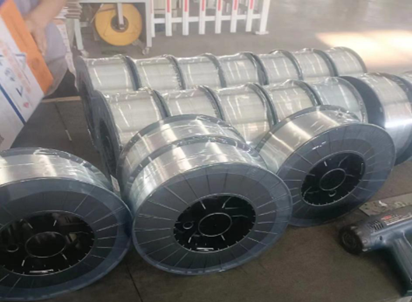
Monel metal is renowned for its remarkable properties, such as high corrosion resistance, excellent mechanical strength, and good thermal conductivity. This article aims to compare Monel metal with other popular nickel-based alloys, such as Inconel, Hastelloy, and Nickel 200, focusing on their compositions, properties, applications, and advantages.
Composition and Properties
Monel Metal
Monel metal typically contains about 65-70% nickel, 20-29% copper, and small amounts of iron, manganese, carbon, and silicon. The most common grades are Monel 400 and Monel K-500. Monel 400 is known for its excellent corrosion resistance in various environments, including seawater and acidic conditions, as well as good mechanical properties. Monel K-500, on the other hand, is precipitation-hardened to achieve higher strength while maintaining similar corrosion resistance.
Inconel
Inconel alloys are primarily composed of nickel and chromium, with varying amounts of iron, molybdenum, and other elements. Inconel 625 and Inconel 718 are the most widely used grades. Inconel 625 offers excellent resistance to oxidation and corrosion, high strength, and good weldability. Inconel 718, known for its high strength and creep resistance at elevated temperatures, is commonly used in aerospace applications.
Hastelloy
Hastelloy alloys are primarily nickel-molybdenum alloys, with the addition of chromium, iron, tungsten, and other elements. Hastelloy C-276 and Hastelloy X are the most commonly used grades. Hastelloy C-276 is highly resistant to pitting, crevice corrosion, and stress corrosion cracking, making it suitable for chemical processing applications. Hastelloy X offers excellent oxidation resistance and high-temperature strength, commonly used in gas turbine engines and industrial furnaces.
Nickel 200
Nickel 200 is a commercially pure nickel alloy, containing a minimum of 99% nickel. It is known for its excellent mechanical properties, good corrosion resistance in reducing environments, and high thermal and electrical conductivity. Nickel 200 is commonly used in food processing, chemical shipping, and electronics.
Applications
Monel Metal
Monel metal’s excellent corrosion resistance and mechanical properties make it suitable for a wide range of applications, including marine engineering, chemical processing, oil and gas extraction, and aerospace. Monel 400 is often used in seawater applications, such as valves, pumps, and marine fixtures, while Monel K-500 is used in applications requiring higher strength, such as fasteners, springs, and chains.
Inconel
Inconel alloys are extensively used in high-temperature applications due to their excellent strength and oxidation resistance. Inconel 625 is commonly used in aerospace, chemical processing, and marine industries for components such as turbine blades, heat exchangers, and exhaust systems. Inconel 718 is widely used in gas turbine engines, rocket engines, and nuclear reactors due to its high strength and creep resistance at elevated temperatures.
Hastelloy
Hastelloy alloys are predominantly used in chemical processing and high-temperature applications. Hastelloy C-276 is ideal for handling aggressive chemicals, including sulfuric acid, hydrochloric acid, and chlorine. It is used in chemical reactors, heat exchangers, and piping systems. Hastelloy X is employed in high-temperature industrial environments, such as gas turbines, heat-treating equipment, and petrochemical processing.
Nickel 200
Nickel 200’s excellent corrosion resistance and high thermal and electrical conductivity make it suitable for a variety of applications, including chemical processing, food processing, and electronics. It is used in equipment such as evaporators, heat exchangers, and electrical components.
Advantages and Disadvantages
Monel Metal
Advantages:
- Excellent corrosion resistance in seawater and acidic environments
- Good mechanical properties
- Resistance to biofouling and low magnetic permeability
Disadvantages:
- Higher cost compared to some other alloys
- Limited high-temperature strength compared to Inconel and Hastelloy
Inconel
Advantages:
- Exceptional high-temperature strength and oxidation resistance
- Good weldability and corrosion resistance
- Suitable for a wide range of high-temperature applications
Disadvantages:
- Higher cost due to complex alloy composition
- Difficult to machine compared to other nickel-based alloys
Hastelloy
Advantages:
- Superior corrosion resistance in aggressive chemical environments
- High strength and oxidation resistance at elevated temperatures
- Versatile applications in chemical processing and high-temperature industries
Disadvantages:
- Expensive due to high content of alloying elements
- Limited availability compared to more common alloys
Nickel 200
Advantages:
- Excellent corrosion resistance in reducing environments
- High thermal and electrical conductivity
- Good mechanical properties and easy to fabricate
Disadvantages:
- Lower strength compared to other nickel-based alloys
- Limited high-temperature applications
Conclusion
In conclusion, Monel metal, Inconel, Hastelloy, and Nickel 200 each offer unique properties and advantages that make them suitable for specific applications.
When selecting materials for their projects, reliable Monel suppliers and other alloy suppliers play a crucial role in providing high-quality materials that meet the stringent requirements of various industries.


